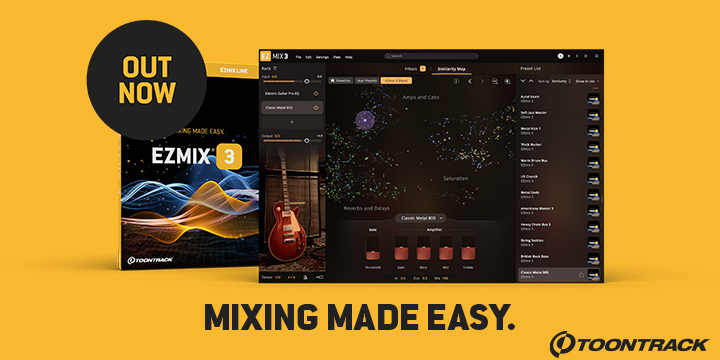
Yamaha have been showing an early version of their new singing synthesis technology at Musikmesse in Frankfurt. Named Vocaloid, the software synthesizes the sound from "vocal libraries" of recordings of actual singers, retaining the vocal qualities of the original singing voices to reproduce real sounding vocals.
By just inputting the melody and words on their PCs, users can produce the vocal parts for their pieces with no further work. The synthesized sound retains the vocal qualities of the original singers voices because Vocaloid synthesizes the sound from the "vocal libraries" of recordings of real people singing. The software also features simple commands that allow users to add expressive effects such as vibrato and pitch bend to their synthesized vocals.
Further development of the range of available vocal libraries will make the production of songs using vocals in a wide range of voice qualities possible using Vocaloid. Currently Vocaloid can generate singing in Japanese and English.
Yamaha intends to concentrate on licensing Vocaloid to selected producers of vocal libraries and software marketers. The company has already agreed on the basic framework of a license agreement with a number of sampling CD development and marketing firms, including Crypton Future Media in Japan, Best Service in Germany and Zero-G in the UK.
Yamaha hopes to commercialise Vocaloid by the end of 2003 or early 2004.
Vocaloid uses Frequency-Domain Singing Articulation Splicing and Shaping, a vocal (singing voice) synthesizing system developed by Yamaha.
With this system, the "Singing articulations" (Collections of voice snippets, such as phrases, and snippets of vocal expression variations like vibrato) needed to reproduce vocals are collected from custom produced recordings of accomplished singers and put into a database after conversion into frequency domains.
To synthesize vocal parts, the system retrieves data consisting of voice snippets, applies pitch conversion, and splices and shapes them to form the words of a song as input by the user. As this processing is done at the frequency domain level, pitch can be easily changed according to the specified melody, and the voice snippets can be spliced in a way that reproduces smooth flowing words.
Vocaloid itself consists of a score editor, which does the scale, song word, and expression processing; the Vocal Sound Generator, the engine that synthesizes the vocals; and libraries (each comprised of a pronunciation database and a timbre database) for each vocal. New vocal libraries can be created by recording real voices pronouncing basic vocabulary and reproducing variation effects (such as vibrato) according to templates.
Key features:
Yamaha don't appear to have any information about Vocaloid on their English web sites yet but the "more info" link will take you to a Babel Fish translation of their Japanese site.
By just inputting the melody and words on their PCs, users can produce the vocal parts for their pieces with no further work. The synthesized sound retains the vocal qualities of the original singers voices because Vocaloid synthesizes the sound from the "vocal libraries" of recordings of real people singing. The software also features simple commands that allow users to add expressive effects such as vibrato and pitch bend to their synthesized vocals.
Further development of the range of available vocal libraries will make the production of songs using vocals in a wide range of voice qualities possible using Vocaloid. Currently Vocaloid can generate singing in Japanese and English.
Yamaha intends to concentrate on licensing Vocaloid to selected producers of vocal libraries and software marketers. The company has already agreed on the basic framework of a license agreement with a number of sampling CD development and marketing firms, including Crypton Future Media in Japan, Best Service in Germany and Zero-G in the UK.
Yamaha hopes to commercialise Vocaloid by the end of 2003 or early 2004.
Vocaloid uses Frequency-Domain Singing Articulation Splicing and Shaping, a vocal (singing voice) synthesizing system developed by Yamaha.
With this system, the "Singing articulations" (Collections of voice snippets, such as phrases, and snippets of vocal expression variations like vibrato) needed to reproduce vocals are collected from custom produced recordings of accomplished singers and put into a database after conversion into frequency domains.
To synthesize vocal parts, the system retrieves data consisting of voice snippets, applies pitch conversion, and splices and shapes them to form the words of a song as input by the user. As this processing is done at the frequency domain level, pitch can be easily changed according to the specified melody, and the voice snippets can be spliced in a way that reproduces smooth flowing words.
Vocaloid itself consists of a score editor, which does the scale, song word, and expression processing; the Vocal Sound Generator, the engine that synthesizes the vocals; and libraries (each comprised of a pronunciation database and a timbre database) for each vocal. New vocal libraries can be created by recording real voices pronouncing basic vocabulary and reproducing variation effects (such as vibrato) according to templates.
Key features:
- Piano Roll note editor.
- Easy to use lyric editing.
- Drag and drop musical expression assigning.
- Reads Vocaloid libraries.
- Synthesizing vocal tracks.
- Saving vocal data in wave files.
- Up to 16 vocal tracks.
- SMF Input/Output.
- Easy to manipulate voice characteristics.
- English and Japanese lyrics available.
- VST Instrument version planned.
Yamaha don't appear to have any information about Vocaloid on their English web sites yet but the "more info" link will take you to a Babel Fish translation of their Japanese site.



 Other Related News
Other Related News